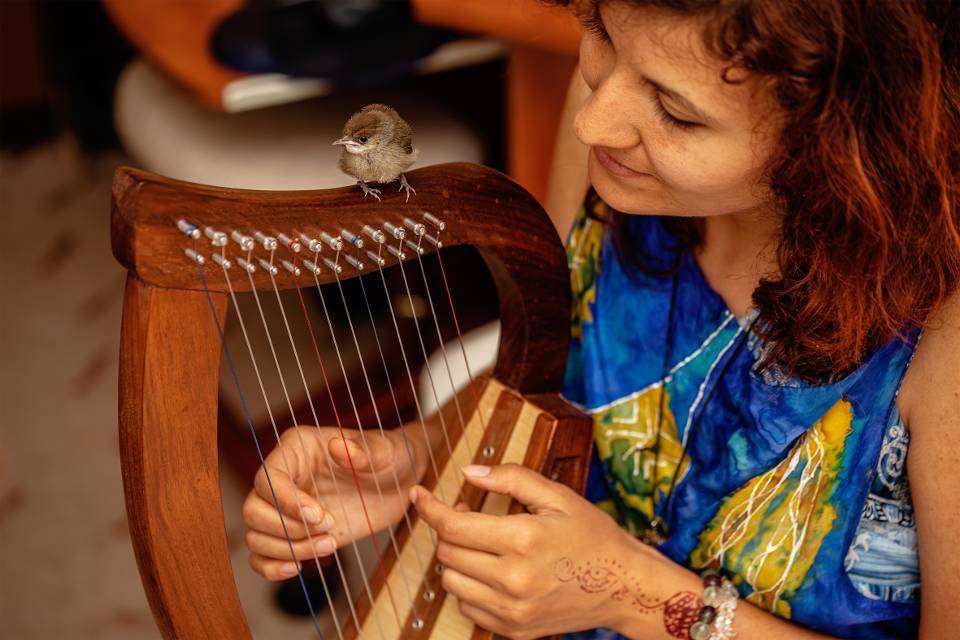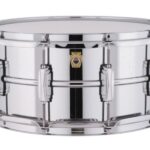Playing the harp is often regarded as a majestic and enchanting skill. With its rich history and captivating sound, the harp has captured the hearts of many musicians and listeners.

However, behind its ethereal beauty lies a challenge that aspiring harpists must overcome.
This article delves into why the harp is considered a complex instrument to play.
We will explore its unique characteristics, technical demands, and the dedication required to master this remarkable instrument.
Join us to unravel the secrets behind the harp’s elusive charm.
Contents
- 1 Reasons Why Harp Is Hard to Play
- 1.1 The Complexity of Harp Strings
- 1.2 Challenging Instrument Setup
- 1.3 Coordination and Dexterity Requirements
- 1.4 Multitasking: Playing Multiple Notes Simultaneously
- 1.5 Pedal Mechanics: A Unique Feature
- 1.6 The Harp’s Size and Portability Issues
- 1.7 Emotional Expression and Musicality
- 1.8 Sustaining Sound: Focus and Stamina
- 1.9 The Importance of Patience and Practice
- 2 Conclusion
Reasons Why Harp Is Hard to Play
Here are the reasons why the harp is a hard-to-play instrument:
The Complexity of Harp Strings
The complexity of harp strings is a fundamental aspect that adds to the challenge of playing this magnificent instrument.
Harp is known for its numerous strings, contributing to its distinctive and resonant sound. However, this abundance of strings also adds complexity to playing the instrument.
Unlike stringed instruments, such as the guitar or piano, where individual strings correspond to specific notes.
On the other hand, harp strings represent different pitches depending on the pedals and levers used.
This intricate system requires harpists to develop a deep understanding of string relationships—also, the ability to adjust the pitch during a performance quickly.
It demands a keen ear, meticulous attention to detail, and the capacity to make real-time decisions to produce harmonious melodies.
Challenging Instrument Setup
Another aspect that makes the harp challenging to play is its intricate setup. The challenging instrument setup of the harp adds another layer of difficulty for aspiring harpists.
The instrument is large and consists of a hollow body, a soundboard, and a complex mechanism of pedals or levers.
Assembling and tuning the harp demands time, precision, and meticulous attention to detail.
Assembling and tuning the harp requires careful attention to detail and precision.
Harpists must dedicate time to ensure that each string is correctly tuned to achieve the desired pitch.
Furthermore, mastering the art of body posture and hand placement is crucial to effectively reaching and plucking the strings.
The intricate setup of the harp demands patience and a keen eye for detail. It makes it an integral part of the challenge of playing this captivating instrument.
Coordination and Dexterity Requirements
Playing the harp requires exceptional coordination and agility. Each hand of the harpist must perform different tasks simultaneously.
One hand plucks the strings while the other controls the pedals or levers to modify the pitch.
The dual-handed technique requires extensive practice to synchronize movements accurately and produce seamless melodies.
The harpist must develop exceptional finger agility and muscle memory to navigate the intricate fingerings and execute complex passages flawlessly.
The coordination of both hands is a delicate dance, demanding focus, control, and unwavering concentration from the harpist.
With perseverance and dedicated practice, the harpist can attain the remarkable coordination and agility required to master this captivating instrument.
Multitasking: Playing Multiple Notes Simultaneously

One of the unique challenges of playing the harp is the ability to play multiple notes simultaneously.
Unlike instruments with frets or keys, harpists use their hands to pluck individual strings, allowing for intricate chords and harmonies.
It requires exceptional hand independence and mental agility to execute complex musical passages accurately.
The harpist must coordinate finger movements across the strings, maintaining a consistent rhythm while producing a harmonious blend of notes.
It requires a keen sense of timing and a deep understanding of musical patterns. Also, the ability to divide attention effectively between different strings and melodies.
It added to the reasons why the harp is difficult to play.
Pedal Mechanics: A Unique Feature
The harp’s pedal mechanics add a layer of complexity to playing the instrument. The pedals modify the strings’ pitch, allowing harpists to play in different keys.
The intricate pedal system requires precise footwork and careful control to achieve the desired pitch changes.
Understanding the relationships between pedals, strings, and notes is essential for navigating the harp’s vast tonal possibilities.
This intricate system requires precise footwork and a delicate touch to achieve accurate pitch changes while maintaining a seamless music flow.
Mastering the pedal mechanics adds complexity to playing the harp.
It showcases the harpist’s skill in manipulating the instrument’s unique features to create beautiful and harmonious compositions.
The Harp’s Size and Portability Issues
The harp’s size and weight present practical challenges for harpists. Concert harps can range from approximately 6 to 7 feet tall and weigh around 80 to 90 pounds.
Transporting such a large instrument requires careful planning and logistics considerations.
Harpists must navigate through doorways, narrow hallways, and sometimes even stairs, making portability a significant concern.
Moreover, the harp’s size influences the physicality of playing. The harpist needs to maintain an upright posture and reach across the instrument to access different strings.
These physical demands contribute to the overall difficulty of playing the harp.
The sheer size of the harp demands a level of physical stamina and endurance to sustain playing for extended periods.
It necessitates the development of specific muscles and an understanding of proper body mechanics to prevent strain or injury.
Emotional Expression and Musicality

Beyond the technical challenges, the harp demands high emotional expression and musicality.
As a versatile instrument, it can convey many emotions, from delicate and soothing melodies to powerful and passionate compositions.
Harpists must cultivate a deep connection with the music they perform, infusing each note with personal expression.
They harness the instrument’s rich tonal palette and employ techniques such as glissandos, arpeggios, and pedal transitions.
It is to convey the intended mood and atmosphere of the music.
Through nuanced dynamics, subtle phrasing, and a keen sense of timing, harpists shape the musical narrative, transporting listeners to ethereal realms.
Sustaining Sound: Focus and Stamina
Sustaining sound is a unique characteristic of the harp that demands unwavering focus and stamina from harpists.
Unlike instruments that rely on breath or bowing, the harp’s sound resonates as long as its strings vibrate.
This enduring quality requires harpists to maintain a heightened concentration throughout their performances.
Harpists must possess the exceptional focus to control dynamics, sustain notes, and manage to time effectively.
They carefully modulate their touch and hand positions to produce the desired tonal qualities. Also, to maintain the sound for the appropriate duration.
This concentration level is essential, as any lapse in attention can affect the overall musicality and impact of the performance.
Moreover, sustaining the sound of the harp demands physical stamina. The harpist’s hands continuously move, plucking strings and maintaining a consistent music flow.
Prolonged performances require the harpist to develop endurance and resilience in their fingers, hands, and arms.
The Importance of Patience and Practice
Patience and practice are crucial in the journey of mastering the harp. Playing this intricate instrument requires a long-term commitment and a deep reservoir of patience.
Progress on the harp takes time and effort, and dedication.
Patience plays a vital role in the learning process. Aspiring harpists must embrace the understanding that acquiring proficiency on the harp takes time.
They encounter challenges such as hand coordination, note accuracy, and complex techniques.
Frustrations may arise, but patience allows them to persevere and overcome obstacles.
Each small step forward becomes a building block for more remarkable accomplishments.
Conclusion
The harp is a captivating instrument that offers challenges and rewards to those who dare to master it.
Its complexity, from the intricate string relationships to the pedal mechanics, demands a deep understanding, coordination, and skill from harpists.
The size and portability issues add practical considerations to the mix, requiring logistical planning and physical stamina.
However, within these challenges lie opportunities for emotional expression and musicality.
Harpists harness the instrument’s sustaining sound and create captivating melodies that resonate with audiences.
Patience and practice form the pillars of success, allowing harpists to embrace the journey, overcome obstacles, and unlock their full potential.
With each pluck of the strings, harpists bring forth a world of beauty and emotion, leaving a lasting impact on listeners.






